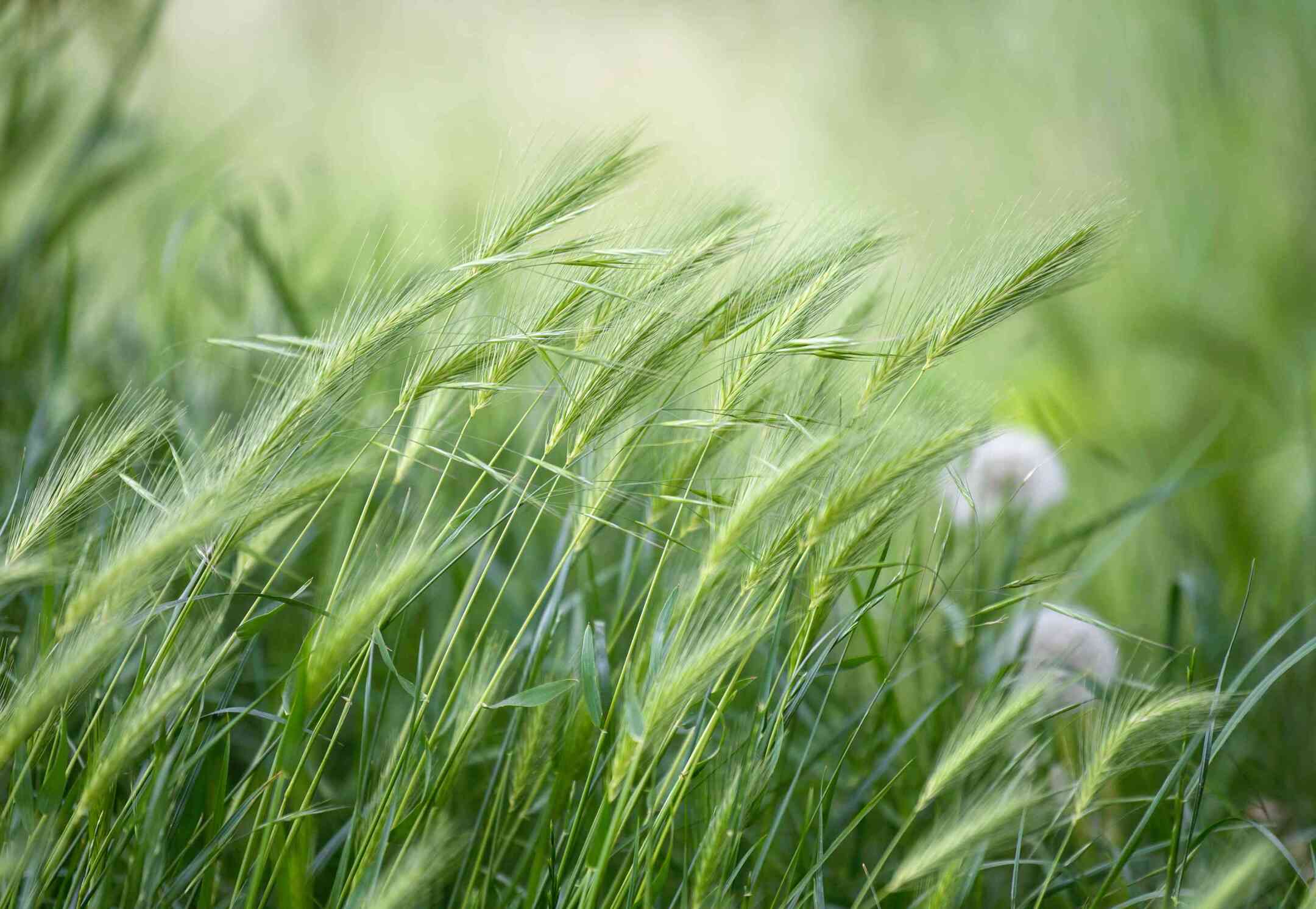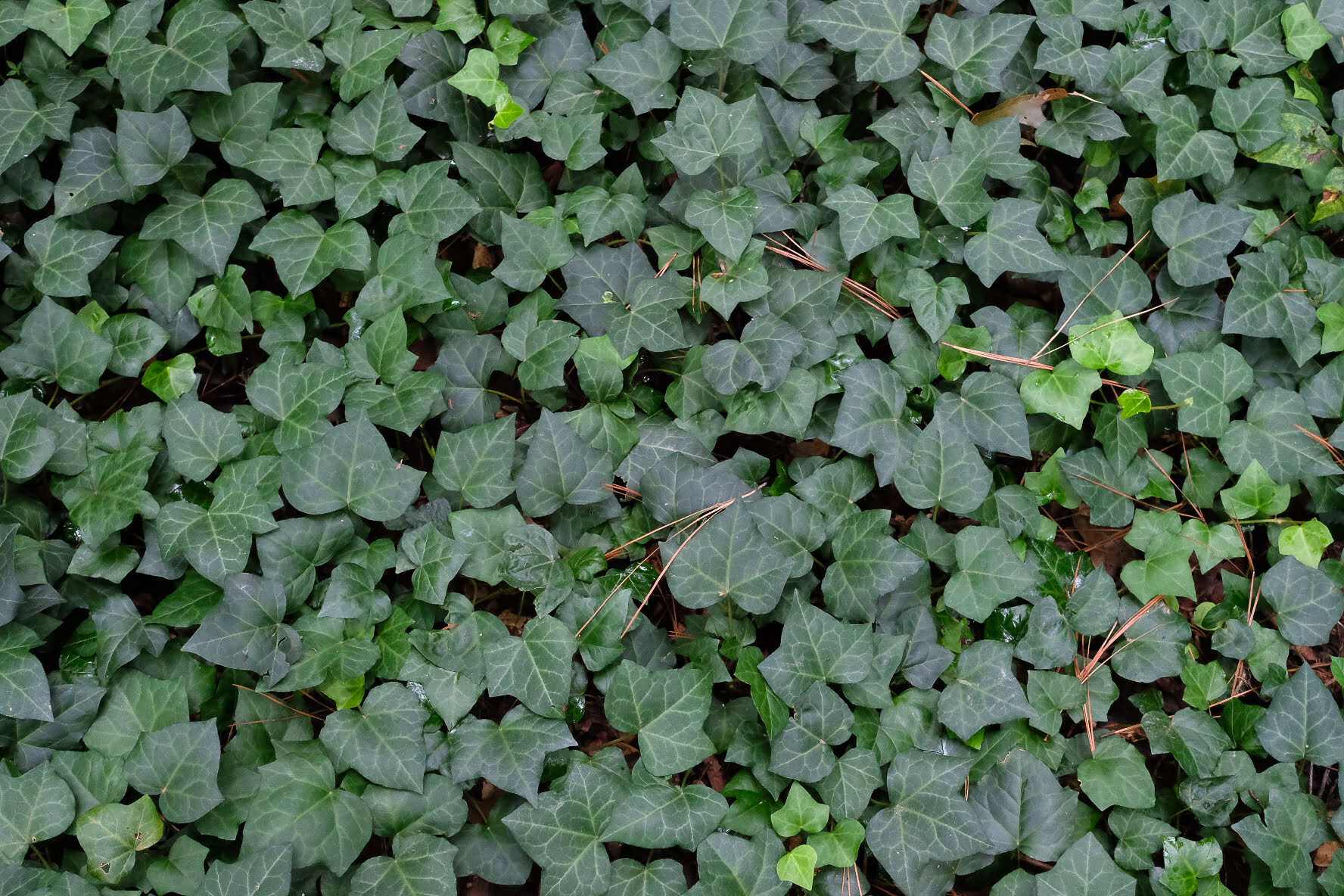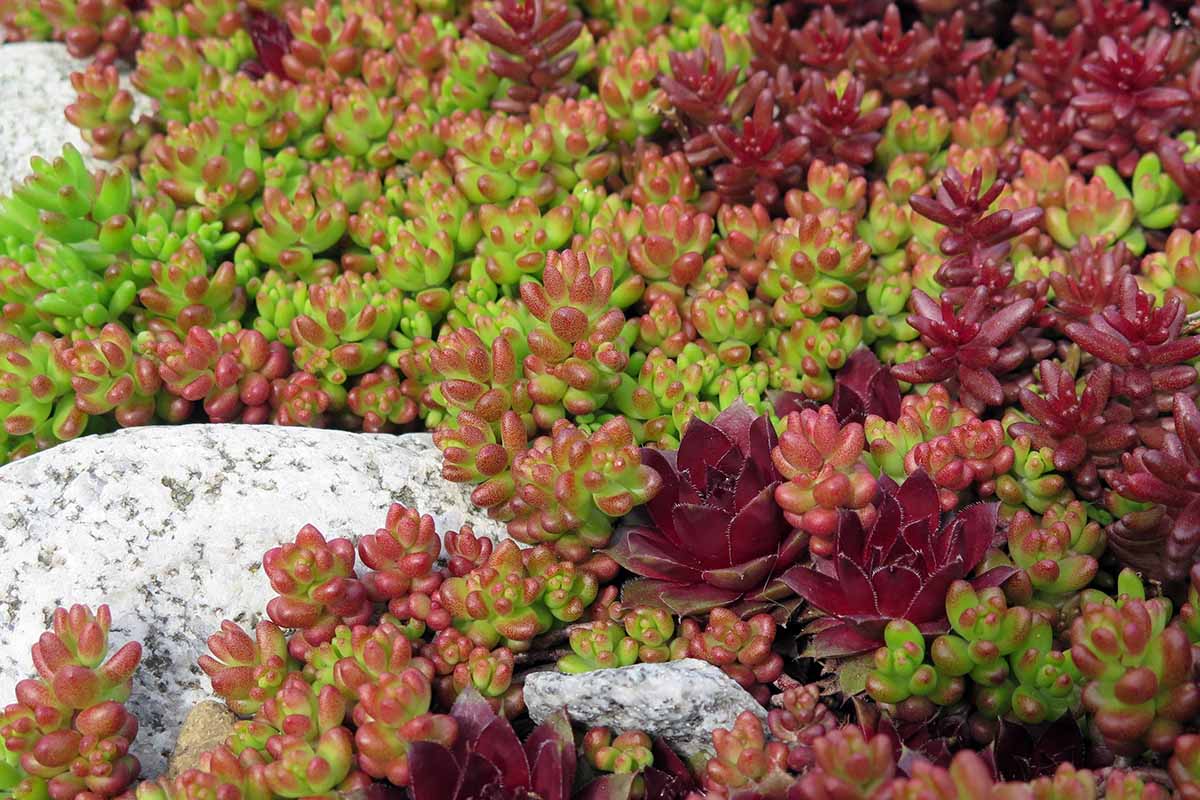Home>Garden Essentials>How To Remove Myrtle Ground Cover


Garden Essentials
How To Remove Myrtle Ground Cover
Modified: August 25, 2024
Learn how to effectively remove myrtle ground cover in your garden. Get expert tips and advice to reclaim your garden space.
(Many of the links in this article redirect to a specific reviewed product. Your purchase of these products through affiliate links helps to generate commission for Storables.com, at no extra cost. Learn more)
Introduction
Myrtle ground cover, also known as Vinca minor or periwinkle, is a popular plant among gardeners due to its attractive foliage and vibrant purple or white flowers. However, there may come a time when you need to remove myrtle ground cover from your garden. Whether you want to make room for new plants or the myrtle has taken over and become invasive, knowing how to properly remove it is essential.
In this article, we will explore the different methods and techniques for removing myrtle ground cover from your garden. We will discuss the reasons for removing it, the steps to prepare for removal, and the various methods that can be used. Whether you prefer manual, chemical, or organic removal, we have you covered.
By understanding the best practices for removing myrtle ground cover, you can ensure that your garden remains healthy and free from invasive plants. So, let’s delve into the world of myrtle ground cover removal and discover the techniques to regain control of your garden.
Key Takeaways:
- Say goodbye to myrtle ground cover by choosing manual, chemical, or organic removal methods. Prevent regrowth with vigilant monitoring and proper garden maintenance for a balanced and beautiful garden.
- Whether it’s overgrowth or a desire for change, removing myrtle ground cover requires careful planning and execution. Choose the right method and take preventative measures to maintain a healthy garden.
Read more: How To Plant Myrtle Ground Cover
Understanding Myrtle Ground Cover
Before we dive into the process of removing myrtle ground cover, let’s take some time to understand what it is and why it is such a popular choice among gardeners.
Myrtle ground cover, scientifically known as Vinca minor, is a evergreen perennial plant native to parts of Asia and Europe. It is commonly used as a ground cover due to its low-growing and spreading nature. The plant features small oval-shaped leaves and produces delicate, trumpet-shaped flowers in shades of purple or white.
One of the main reasons why myrtle ground cover is so popular is its ability to form a dense mat of foliage, effectively suppressing the growth of weeds. This makes it an ideal choice for areas with poor soil or shady spots where other plants may struggle to thrive. In addition, myrtle ground cover is known for its tolerance to deer, making it a great option for gardens in areas with high deer populations.
It is worth noting, however, that myrtle ground cover can become invasive if not properly maintained. It has the potential to spread aggressively and take over other areas of the garden. Therefore, it is important to keep an eye on the growth of myrtle and take necessary steps to prevent it from becoming a nuisance.
Now that we have a better understanding of myrtle ground cover, let’s explore the reasons why you might need to remove it from your garden.
Reasons for Removing Myrtle Ground Cover
While myrtle ground cover can serve as a beautiful and functional addition to your garden, there are several reasons why you might need to remove it. Let’s explore some of the most common reasons for removing myrtle ground cover:
- Overgrowth: One of the main reasons for removing myrtle ground cover is when it starts to spread excessively and take over other areas of your garden. If left unchecked, myrtle can smother and outcompete other plants, leading to a loss of biodiversity.
- Unwanted invasiveness: Despite its benefits, myrtle ground cover can become invasive in certain regions. It has the potential to escape from cultivated areas and invade natural habitats, displacing native plants and disrupting ecosystems.
- Desire for change: Gardens evolve over time, and you might simply want to change the look or design of your garden. Removing myrtle ground cover can give you a fresh canvas to work with and allow for new plants or design elements to take center stage.
- Maintenance challenges: While myrtle ground cover is relatively low-maintenance, it still requires regular care, such as pruning and controlling its spread. If you find it challenging to keep up with the maintenance demands of myrtle, removing it may be a viable option.
- Limited space: If your garden has limited space, myrtle ground cover’s spreading nature may not be ideal. Removing it can free up space for other plants or features that better suit your gardening goals.
It is important to consider your specific circumstances and needs when deciding to remove myrtle ground cover. By doing so, you can ensure that your garden maintains a healthy balance and meets your aesthetic and functional preferences.
Now that we understand the reasons for removing myrtle ground cover, let’s move on to the necessary preparations before embarking on the removal process.
Preparing for Removal
Before you begin the process of removing myrtle ground cover from your garden, it is important to make a few preparations to ensure a smooth and successful removal process. Let’s take a look at the necessary steps to prepare for removing myrtle ground cover:
- Assess the area: Start by evaluating the extent of myrtle ground cover growth in your garden. Note any areas where it has spread excessively or where you want it removed completely. This will help you plan your removal strategy accordingly.
- Gather the necessary tools: Depending on the method you choose for removing myrtle ground cover, you may need a variety of tools. Common tools for manual removal include garden gloves, a trowel or shovel, and pruning shears. If you opt for chemical removal, gather the appropriate chemicals as per the product instructions.
- Check the weather: It is important to check the weather forecast before starting the removal process. Avoid working on a hot, sunny day, as it can stress both the myrtle and yourself. Opt for cooler, overcast days for optimal conditions.
- Protect adjacent plants: Before you begin removing myrtle, take the time to protect any adjacent plants or desirable vegetation. Use a plastic or cardboard barrier to shield the plants you want to keep from potential damage during the removal process.
- Notify others: If you share a garden space with neighbors or have a homeowners’ association, it is courteous to inform them of your plans to remove myrtle. This allows for open communication and ensures everyone is on the same page.
By taking these preparatory steps, you set yourself up for a smoother removal process and minimize any potential damage to your garden. Now that you are prepared, let’s explore the different methods you can employ to remove myrtle ground cover.
Methods to Remove Myrtle Ground Cover
When it comes to removing myrtle ground cover, there are several methods you can choose from depending on your preferences and the level of infestation. Let’s explore three common methods: manual removal, chemical removal, and organic removal.
-
Manual Removal: This method involves physically pulling out the myrtle plants and their root systems from the ground. To do this effectively:
- Wear gloves to protect your hands from potential irritation.
- Use a garden trowel or shovel to loosen the soil around the myrtle plants.
- Gently grasp the base of the myrtle plants near the soil level and pull upward, ensuring you remove the entire root system.
- Dispose of the removed myrtle plants in a bag or container, away from your garden, to prevent reestablishment.
- Repeat the process for all myrtle plants until the desired area is clear.
Manual removal is ideal for smaller areas or when selective removal is required.
-
Chemical Removal: If you are dealing with a substantial myrtle ground cover infestation, chemical removal may be the most effective option. It is important to note that chemical removal should be used cautiously and strictly following the instructions on the product label. Here’s how to use chemical herbicides for myrtle removal:
- Select a herbicide specifically formulated for myrtle ground cover.
- Carefully apply the herbicide to the leaves of the myrtle plants, ensuring full coverage.
- Avoid overspray or contact with desirable plants, as the herbicide may harm or kill them.
- Allow the herbicide to work according to the instructions provided, usually requiring a few weeks to fully kill the myrtle plants.
- After the myrtle plants have died, manually remove the dead vegetation from your garden.
Chemical removal is best suited for larger areas or when manual removal is not feasible.
-
Organic Removal: If you prefer a more environmentally friendly approach, organic removal methods can help eliminate myrtle ground cover. Here are a few options:
- Smothering: Cover the myrtle with a thick layer of organic mulch or cardboard to deprive it of sunlight and suffocate it over time.
- Repeated mowing: Continuously mowing the myrtle at a low setting can weaken the plants over time and eventually kill them.
- Vinegar solution: Apply a mixture of white vinegar and water directly on the myrtle plants, focusing on the foliage. Be cautious, as vinegar can also affect other nearby plants.
Organic removal methods may take longer to show results but provide a natural and safe alternative.
Choose the method that aligns with your preferences, the size of the infestation, and the specific needs of your garden. Once you have successfully removed the myrtle ground cover, it is important to take steps to prevent its regrowth.
Now that we have explored the different removal methods, let’s move on to discussing preventative measures to ensure that the myrtle does not return to your garden.
To remove myrtle ground cover, use a shovel to dig up the roots and pull out any remaining pieces by hand. Be sure to remove all roots to prevent regrowth. Dispose of the plant material properly to prevent spreading.
Read more: How To Start Hillside Ground Cover
Manual Removal
Manual removal is a method of removing myrtle ground cover that involves physically pulling out the plants and their root systems. This method is effective for smaller areas or when selective removal is required. Here’s how you can successfully remove myrtle ground cover manually:
- Wear protective gloves: Before you begin, put on a pair of gardening gloves to protect your hands from potential irritation caused by the myrtle plants.
- Loosen the soil: Use a garden trowel or shovel to gently loosen the soil around the myrtle plants. This will make it easier to extract them from the ground.
- Grasp the base: Firmly grasp the base of the myrtle plants near the soil level. Try to grip them as close to the ground as possible to ensure you remove the entire root system.
- Pull upward: Slowly and steadily pull upward on the myrtle plants, applying gentle pressure. The goal is to remove the plants and their roots intact to minimize the chances of regrowth.
- Dispose of the plants: After removing the myrtle plants, place them in a bag or container for disposal. It’s important to dispose of the plants away from your garden to prevent any potential reestablishment.
- Repeat the process: Continue the manual removal process for all the myrtle plants in the desired area. Take your time to ensure thorough removal and to avoid leaving behind any remnants that could lead to regrowth.
Manual removal can be a satisfying and effective way to regain control over myrtle ground cover in your garden. It allows for selective removal, which is particularly handy if you want to preserve certain areas where myrtle coexists with other desired plants.
However, it is important to note that manual removal may require some effort and time, especially if the myrtle ground cover has spread extensively. Regular monitoring and follow-up maintenance may also be necessary to prevent any new growth from occurring.
Now that you know how to manually remove myrtle ground cover, let’s explore other methods of removal, including chemical and organic alternatives.
Chemical Removal
Chemical removal is a method of removing myrtle ground cover that involves using herbicides specifically formulated for targeting and eliminating the plants. This method is effective for larger areas or when manual removal is not feasible. It is important to note that when using chemical herbicides, it is crucial to follow the product instructions carefully to ensure safe and effective application. Here is a step-by-step guide for chemical removal of myrtle ground cover:
- Select the right herbicide: Choose a herbicide that is labeled for myrtle ground cover and follow any safety precautions provided by the manufacturer.
- Prepare the herbicide mixture: Mix the herbicide with water according to the instructions on the product label. Use a sprayer or a watering can to apply the mixture. Make sure to wear protective clothing, including gloves and eyewear, during the preparation and application process.
- Apply the herbicide: Spray the herbicide directly onto the myrtle ground cover, ensuring thorough coverage of the foliage. Avoid spraying on windy days to prevent herbicide drift onto desirable plants. Take care to avoid overspray and contact with other plants as the herbicide may harm or kill them.
- Allow time for the herbicide to work: Herbicides typically require time to translocate throughout the plant and disrupt its growth. Follow the recommended waiting period specified on the product label before proceeding with additional treatment or removal.
- Remove the dead vegetation: Once the myrtle ground cover has died, it is important to remove the dead vegetation from your garden. Use manual methods such as raking or hand-picking to clear away the dead plants and dispose of them properly.
- Monitor and follow-up: Keep an eye on the area where the myrtle ground cover was treated and monitor for any signs of regrowth. If new plants or sprouts emerge, they should be promptly treated using the same chemical removal process.
Chemical removal can be an effective option for controlling myrtle ground cover over larger areas. However, it is important to exercise caution when using herbicides and follow all safety instructions provided by the manufacturer. Additionally, be mindful of the potential impact on other plants and take steps to protect desirable vegetation from accidental exposure to the herbicide.
Now that you are familiar with chemical removal, let’s explore another method for removing myrtle ground cover: organic removal.
Organic Removal
If you prefer a more environmentally friendly approach, organic removal methods can effectively eliminate myrtle ground cover. These methods may take longer to show results but provide a natural and safe alternative. Here are a few organic removal options:
- Smothering: Covering the myrtle ground cover with a thick layer of organic mulch or cardboard can help deprive it of sunlight and oxygen, effectively smothering the plants. This method requires patience since it can take several months for the myrtle to die off completely. Regularly inspect the area and adjust the mulch or cardboard as needed.
- Repeated mowing: Continuously mowing the myrtle ground cover at a low setting can weaken the plants over time, eventually leading to their demise. Be consistent with mowing and ensure that you mow the myrtle before it has a chance to flower and spread seeds.
- Vinegar solution: Create a mixture of white vinegar and water, and directly apply it to the foliage of the myrtle ground cover. The acetic acid in vinegar can be effective at killing the plants. However, take caution not to overspray or allow the vinegar solution to come into contact with desirable plants, as it may also harm them.
When using organic removal methods, it’s important to remember that patience is key. These approaches work gradually, and it may take some time before you see significant results. Regular monitoring and follow-up treatments may be necessary to ensure complete removal.
Organic removal methods provide a natural and eco-friendly way to eliminate myrtle ground cover without the use of synthetic chemicals. They are particularly suitable for those who prioritize sustainability and prefer non-toxic alternatives in their garden practices.
Now that you are familiar with organic removal methods, let’s explore how you can prevent myrtle ground cover from regrowing in your garden.
Preventing Myrtle Ground Cover Regrowth
After successfully removing myrtle ground cover from your garden, it is important to take steps to prevent its regrowth. Here are some preventative measures you can implement:
- Maintain vigilant monitoring: Regularly inspect your garden for any signs of new myrtle growth. As soon as you spot any sprouts or runners, promptly remove them to prevent the myrtle from spreading and establishing itself again.
- Improve soil health: Myrtle ground cover tends to thrive in poor or compacted soil. Enhance the health and fertility of your soil by adding organic matter, such as compost or well-rotted manure. This will promote the growth of desired plants and make it more difficult for myrtle to establish itself.
- Practice proper spacing: When planting new vegetation in your garden, ensure that you provide adequate spacing between plants. This will minimize the chances of myrtle ground cover spreading and encroaching on other plantings.
- Mulch your garden beds: Apply a layer of organic mulch, such as wood chips or straw, to your garden beds. Mulch helps suppress weed growth, including any potential myrtle regrowth, while keeping the soil moist and cool for your desired plants.
- Regularly maintain your garden: Proper garden maintenance is essential to prevent myrtle ground cover from taking over again. This includes regular weeding, pruning, and trimming of plants to keep them in optimal shape and prevent the myrtle from outcompeting them.
- Monitor neighboring areas: Keep an eye on neighboring areas, such as fence lines or adjacent properties, where myrtle ground cover may be present. If you notice myrtle spreading from these areas, take action to prevent its encroachment into your garden by creating physical barriers or addressing the source of the infestation.
By implementing these preventative measures, you can significantly reduce the chances of myrtle ground cover regrowing and spreading in your garden. Consistency and regular maintenance are key to maintaining control over invasive plant species.
Remember, it’s always easier to prevent the establishment of myrtle ground cover than to remove it once it has taken hold. By following these preventive steps, you can enjoy a healthy and thriving garden without the threat of myrtle encroachment.
Now that we have covered the prevention strategies, let’s conclude our article.
Read more: How To Kill Ivy Ground Cover
Conclusion
Removing myrtle ground cover from your garden is a task that requires careful planning, execution, and ongoing maintenance. Whether you choose manual, chemical, or organic removal methods, it is important to consider the specific needs of your garden and the extent of the myrtle infestation.
Understanding the reasons for removing myrtle ground cover, such as overgrowth, invasiveness, or the desire for a change, is crucial in determining the best course of action. Preparing for removal by assessing the area, gathering the necessary tools, and checking the weather ensures a smoother process.
Manual removal allows for selective removal and is ideal for smaller areas, while chemical removal can be effective for larger infestations, although caution must be exercised. Organic removal methods provide a natural and environmentally friendly alternative, but they may require more time and patience for desired results.
Once myrtle ground cover has been successfully removed, preventing its regrowth becomes a priority. Vigilant monitoring, improving soil health, proper spacing, mulching, and regular garden maintenance are essential in keeping myrtle at bay and maintaining a healthy and diverse garden.
Remember, the goal is not only to remove the myrtle ground cover but also to create a balanced and harmonious garden that supports the growth of desired plants and enhances the overall aesthetics of your outdoor space.
By following the methods and techniques discussed in this article, you are equipped with the knowledge to tackle myrtle ground cover removal in an effective and sustainable manner. Take the necessary steps to regain control of your garden, and enjoy the beauty and tranquility of a well-maintained and thriving outdoor space.
Happy gardening!
Ready to give your garden a new look after tackling that myrtle ground cover? Why not check out creative ways to enhance your outdoor space with our guide on garden fence ideas? Perfect for any landscaping enthusiast, this guide offers inspiration to transform your yard into a picturesque retreat.
Frequently Asked Questions about How To Remove Myrtle Ground Cover
Was this page helpful?
At Storables.com, we guarantee accurate and reliable information. Our content, validated by Expert Board Contributors, is crafted following stringent Editorial Policies. We're committed to providing you with well-researched, expert-backed insights for all your informational needs.














0 thoughts on “How To Remove Myrtle Ground Cover”